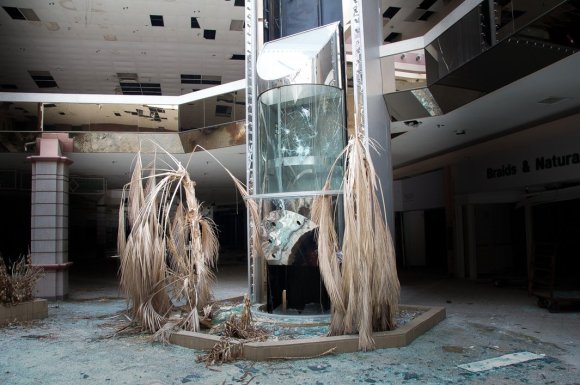
Hundreds of shopping malls across the U.S. have been forced to shut down following years of debilitating declines in consumer traffic.
In many cases, the shuttered malls are left to decay for years before developers or local governments raise the funds to bulldoze or renovate the space.
Pseudonymous photographer Seph Lawless traveled the country for years to find these forgotten malls and document their decay from the inside.
The photos he captured are haunting and apocalyptic, featuring dead trees and abandoned shopping carts against landscapes of broken glass and crumbling walls.
He compiled the photographs in a new book, “Black Friday: The Collapse of the American Shopping Mall,” and shared some of them with Business Insider.
You can also see his work on Facebook and Instagram.
Lawless said he started taking photos of shopping malls in 2012 for a project focusing on some of the most “abandoned and forgotten cities in America.”
He was taking photos of abandoned houses, factories and hospitals, when he decided to focus on dead shopping malls.
Most of his photographs were taken in the Rust Belt, including Michigan, Indiana, Ohio and Pennsylvania.
t was nearly impossible for him to legally gain access to closed shopping malls due to liability factors, he said.
As a result, he trespasses.
“I don’t condone what I do and it’s very dangerous on many levels,” he said.
Lawless has been arrested in the past for trespassing and recently a warrant was issued for his arrest, he said.
“I turned myself in with my lawyer present last week,” he said. “We plan on fighting those charges later this month.”
Lawless hopes the photos will increase awareness of economic strife in the U.S.
“I want people to see what is happening to their country,” he said. “I think most people care and love their country but most are sheltered from reality.”
He partly blames social media for the disconnect he describes.
Despite that, he uses social media to share his work.
“My work isn’t complete until it’s shared,” he said.
He said he wants his images to “scare people.”
“I hope people see my images and see the beginning of the end of the greatest economic machine that the world has ever seen — America,” he said.
Many of the malls that have closed in recent years are in lower-income neighborhoods that were hit hard by the recession.
The first signs of trouble for a shopping mall often comes with the closure of traffic-driving anchors like Sears and JCPenney, which have been shutting down stores for years.
It’s often difficult for mall owners to find retailers big enough to replace these anchors.
Slowly, over time, entire wings are closed down and stores are consolidated into a few sections of the mall.
Eventually, some non-retail businesses — and in some cases churches — may move into the vacated stores.
It takes several years for most dying malls to completely close down.